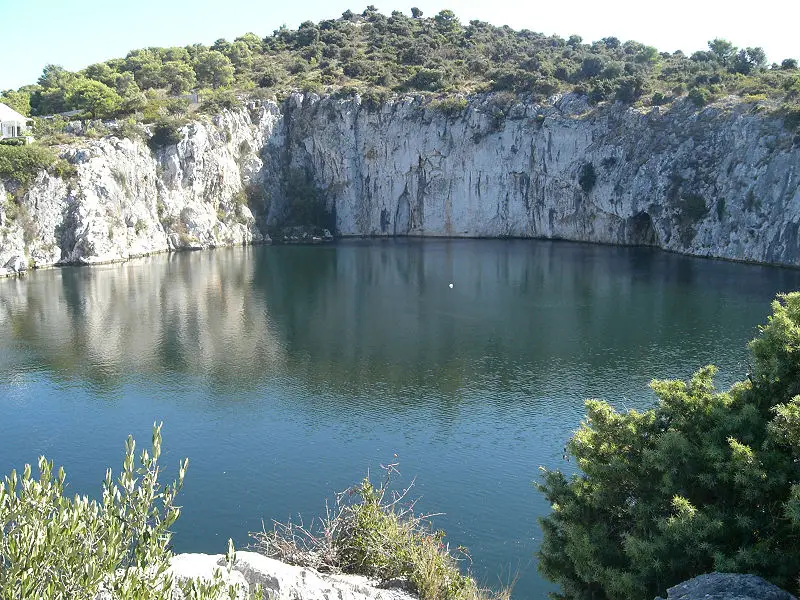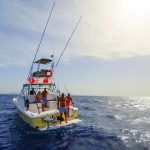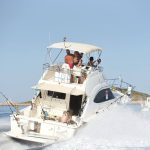As Morski writes on the 5th of October, 2020, Rudjer Boskovic Institute scientists are busy investigating the disappearance of oxygen from the iconic Dragon’s Eye Lake in Rogoznica. The Rudjer Boskovic Institute scientists studying the body of water in Rogoznica have recently noticed a change in the colour and smell of the lake. It is the occurrence of anoxia in the entire water column of the lake and the spread of toxic hydrogen sulfide. This natural process is favoured by extreme weather conditions, such as a sudden drop in atmospheric temperature.
Rogoznica Lake, more popularly known as the Dragon’s Eye, is a natural phenomenon and a unique marine system in the Adriatic and the Mediterranean region. Recently, due to its physico-chemical and biological characteristics, it has been included on the map of about a hundred permanently stratified, anoxic (oxygen-free) and euxinic (free toxic sulfide in the water column) lakes in the world.
The main characteristic of the lake is seasonal stratification into an upper oxic layer, a middle layer or a chemocline coloured in purple, and a bottom anoxic layer characterised by complete darkness (due to there being absolutely no presence of light) and high concentrations of toxic ammonia and sulfide.
”Recently, the lake has suddenly mixed again, has become blurred, the smell of rotten eggs has spread, and the lake has changed from its usual transparent greenish-blue colour of the surface to an opaque greenish-gray. During the mixing of the water ‘slayers, sulfide evaporation and oxidation has occurred in the lake, as well as the formation of polysulfide and elemental sulfur, which, due to high concentration and low solubility, appears in colloidal form, ie sediment in the water column, which changed the transparency and colour of the lake.
The process of mixing and oxidation of sulfides consumed all the oxygen in the lake, and the lake, as of the 27th of September, 2020, has remained completely oxygen-free. Such a condition has caused the death of theflora and fauna,” explained Dr. sc. Irena Ciglenecki-Jusic, Head of the Laboratory for Marine Physics and Water Systems Chemistry of the aforementioned institute.
This state of anoxia in the entire water column has been recorded three times so far, in September 1997, October 2011, and more recently in 2016. The lake has been the subject of natural science research by Rudjer Boskovic scientists in collaboration with colleagues from the Faculty of Science, University of Zagreb, the Centre for Sea and Coast in Dubrovnik and the Split Institute of Oceanography and Fisheries, as well as a team of international colleagues since way back in 1990.
The occurrence of anoxia in the entire water column of the lake is a natural process that occurs at irregular time intervals depending on the weather conditions. It is affected by extreme weather conditions, such as a sharp drop in the temperature of the atmosphere, which suddenly cools the salty surface layer of water. This layer of water sinks and mixes with water below which is rich in sulfide. In the last ten years, such sudden changes have become more frequent – scientists say.
”The recovery of the lake is long-lasting, especially in terms of biology, while the chemical processes more or less returns to the way it was within a month or so. According to current knowledge, biological recovery takes several years, but then there is re-mixing and that same life cycle starts all over again. However, it always begins from a new starting point, which is especially interesting for further specific research,” explained Dr. Ciglenecki-Jusic.
The lake is considered a natural laboratory for monitoring changes in the environment, and in recent times has proven to be ideal for monitoring the transport and delivery of desert dust from the Sahara to the central Adriatic.
For the latest travel info, bookmark our main travel info article, which is updated daily.
Read the Croatian Travel Update in your language – now available in 24 languages
Join the Total Croatia Travel INFO Viber community.











